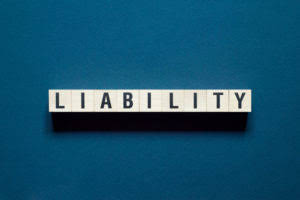
The basic method of allocation of incremental cost in economics is to assign a primary user and the additional or incremental user of the total cost. Incremental costs are the costs linked with the production of one extra unit, and it considers only those costs that tend to change with the outcomes of a particular decision. You calculate your incremental revenue by multiplying the number of smartphone units by the selling price per smartphone unit.
How are fixed costs treated in cost accounting?
Identifying such costs is very important for companies as it helps them decide whether the additional cost is in their best interest. The negative $25,000 incremental cost signals that outsourcing would reduce production costs by $25,000 for this volume. Here the $20,000 incremental cost reveals how much extra the premium feature addition will cost in total across 1,000 product units. If no excess capacity is present, additional expenses to consider include investment in new fixed assets, overtime labor costs, and the opportunity cost of lost sales. Relevant costs (also called incremental costs) are incurred only when a particular activity has been initiated or increased. To increase the sales to gain more market share, the company can leverage the lower cost per unit of the product to lower the price from ₹ 25 and sell more units at a lower price.

Negative externalities of production

Such production creates a social cost curve that is below the private cost curve. In an equilibrium state, markets creating positive externalities of production will underproduce their good. As a result, the socially optimal production level would be greater than that observed.
How can incremental cost be used to make better business decisions
While the output when marginal cost reaches its minimum is smaller than the average total cost and average variable cost. When the average total cost and the average variable cost reach their lowest point, the marginal cost is equal to the average cost. Analyzing production volumes and the incremental costs can help companies achieve economies of scale to optimize production. Economies of scale occurs when increasing production leads to lower costs since the costs are spread out over a larger number income statement of goods being produced.
Company
Analyzing production volumes and incremental costs can assist businesses in achieving economies of scale in order to optimize production. Economies of scale occur when expanding production results in cheaper costs because the costs are spread out over a incremental cost greater number of commodities produced. When incremental costs are added, the fixed costs normally do not change, implying that the cost of the equipment does not vary with production levels. In some cases, the decision may be clear-cut based on the total cost of the project. However, there are other times when incremental cost must be taken into account.
- Understanding the additional costs of increasing production of a good is helpful when determining the retail price of the product.
- For example, when the 2,000 additional units are manufactured most fixed costs will not change in total although a few fixed costs could increase.
- Incremental cost of capital is related to composite cost of capital, which is a company’s cost to borrow money given the proportional amounts of each type of debt and equity a company has taken on.
- Incremental costs are also useful for deciding whether to manufacture a good or purchase it elsewhere.
- One advantage of using this is that it provides information about whether it is efficient to produce more units of a good or service.
Although a portion of fixed costs can increase as production increases, the cost per unit usually declines since the company isn’t buying additional equipment or fixed costs to produce the added volume. Of great importance in the theory of marginal cost is the distinction between the marginal private and social costs. It is the marginal private cost that is used by business decision makers in their profit maximization behavior. It incorporates all negative and positive externalities, of both production and consumption. Examples include a social cost from air pollution affecting third parties and a social benefit from flu shots protecting others from infection.

Each smartphone costs you $100 to produce, and your selling price each smartphone is https://www.bookstime.com/ $300. Each organization determines costs differently based on its overhead cost structure. The separation of fixed and variable costs, as well as the assessment of raw material and labor costs, varies by organization. It simply divides the change in costs by the change in quantity produced to determine the incremental cost.
- For instance, a company merger might reduce overall costs of because only one group of management is required to run the company.
- Here the $20,000 incremental cost reveals how much extra the premium feature addition will cost in total across 1,000 product units.
- Economies of scale occur when expanding production results in cheaper costs because the costs are spread out over a greater number of commodities produced.
- The marginal cost can be either short-run or long-run marginal cost, depending on what costs vary with output, since in the long run even building size is chosen to fit the desired output.
It can be of interest to determine the incremental change in cost in a number of situations. For example, the incremental cost of an employee’s termination includes the cost of additional benefits given to the person as a result of the termination, such as the cost of career counseling. Or, the incremental cost of shutting down a production line includes the costs to lay off employees, sell unnecessary equipment, and convert the facility to some other use. As a third example, the sale of a subsidiary includes the legal costs of the sale. The marginal cost intersects with the average total cost and the average variable cost at their lowest point. Take the Relationship between marginal cost and average total cost graph as a representation.

 Μαβίλη 9, Άνω Πατήσια
Μαβίλη 9, Άνω Πατήσια